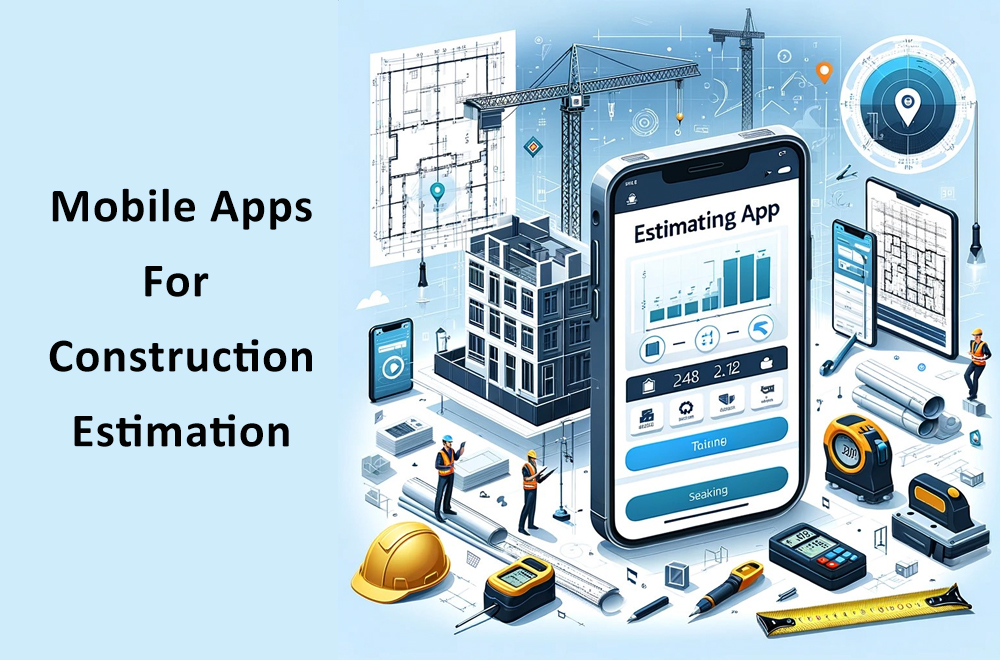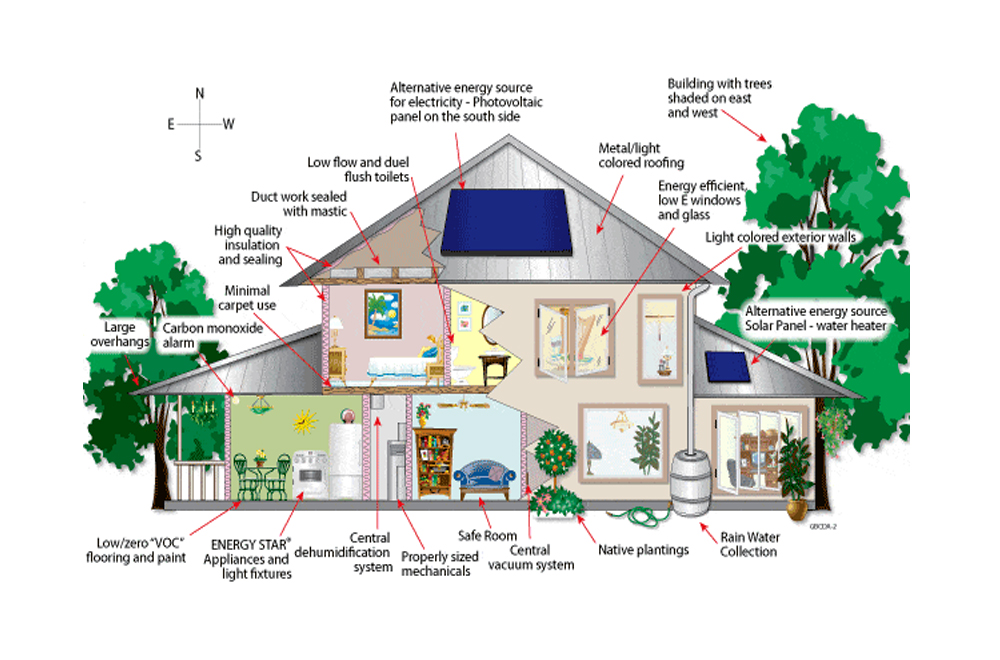Project cost estimation is undeniably complex, fraught with unique factors that challenge even the most experienced professionals. For many businesses, deciphering the intricacies of a project’s scope and constraints can feel like a challenging task. This multifaceted process involves cost forecasting, meticulous scheduling, strategic planning, and vigilant monitoring. Unfortunately, not every entrepreneur or growing business can readily master this skill. Ineffectual project cost estimation often serves as a harbinger of project delays, derailments, or, in dire cases, cancellations, leading to substantial losses in both time and resources.
However, the daunting task of developing a precise cost estimate for project planning can be significantly streamlined with the help of construction estimating companies using advanced tools. Firms like Construct Estimates offer invaluable services that empower business owners across various industries to navigate this intricate landscape more precisely.
The project cost estimation is not just about numbers; it’s about keeping your project on course, ensuring it stays within budget, and ultimately, seeing it to successful completion.
Now, let’s explore the fundamentals of project cost estimation. What exactly is it, and what key components make it tick?
Table of Contents
ToggleWhat is Project Cost Estimation?
Project cost estimation is the process of foreseeing the quantity, cost, and pricing of the resources essential for a project’s scope. It’s not about counting actual expenses but predicting them, introducing an element of uncertainty. Accurate cost estimation is fundamental to successful project management, enabling effective budget planning and risk mitigation. Think of how much the project will cost by foreseeing the financial landscape before you set foot on it.
This is where you start painting a picture of the project’s expenses. How much will the materials cost? What about labor? Equipment? Facilities? All these questions are like jigsaw puzzle pieces, and cost estimation helps you put them together into a coherent picture.
To achieve accurate project cost estimation, several key components come into play:
- Forecasting: You predict future costs based on historical data, market trends, and expert insights. The accuracy of your forecast will determine how well you navigate financial storms.
- Scheduling: It involves setting a timeline for when various expenses will occur. This helps in allocating resources efficiently and avoiding financial crunches.
- Planning: This is where you outline the strategy. What materials will you need, and when? How many workers? Planning involves answering these questions and creating a roadmap for the project’s financial journey.
- Monitoring: It’s not a one-and-done process. Monitoring is the vigilant oversight that ensures your project stays on track. It involves keeping a close eye on expenses, identifying potential deviations, and making timely adjustments to stay on budget.
Project cost estimation is all about aligning your estimated costs with the scope of your project, helping you budget effectively and predict potential expenses.
So, what are the key factors in cost estimation? Let’s break it down:
Factors to Consider in Project Cost Estimation
Understanding and effectively estimating these factors is the foundation of project cost estimation. Each piece of this puzzle contributes to your project’s financial success.
Labor Costs
Labor is the backbone of any project. Calculating labor costs involves considering hourly wages, weekly hours, and accounting for any location-based surcharges. It’s about determining how much each worker should be paid per hour of work. Accurate calculations here are crucial for budgeting and maintaining a happy and motivated workforce. Weekly hours can vary based on the project’s size and complexity. Properly estimating the weekly hours helps in resource allocation and budget management.
Construction projects in different locations can have varying surcharges. These location-based surcharges add another layer of complexity to labor cost estimation. Get these numbers wrong, and you’re in for a bumpy ride.
Materials and Equipment Expenses
Aside from the workforce, you’ll need the right tools and materials to complete your project. Knowing the costs associated with these elements is essential. This involves estimating the costs of equipment rentals and the materials you’ll use, ensuring you have the necessary resources at the right time.
Facilities Costs
Facilities costs cover the expenses associated with the project’s physical infrastructure. This can include things like renting office space, maintaining equipment storage, and more. Lower facility costs can be a game-changer for companies. Keeping these costs in check is vital for staying within your budget and efficient project management. Plus, maintaining the right licenses and certifications is crucial for regulatory compliance.
Indirect Expenses
Think beyond the obvious. Indirect expenses cover management, security, insurance, and more. These costs might not be glaringly obvious, but they are vital to your cost estimation.
Tips and Strategies for Staying on Budget
Optimizing Labor Costs
Labor is often the most significant chunk of your project’s expenses, and keeping this category under control is crucial for staying on budget. Here are some tips for calculating and managing labor costs.
- Hourly Wage Analysis: Begin by analyzing the hourly wage rates for your workforce. Understand that different skill sets may come with varying wage expectations. It’s important to balance quality and cost-effectiveness.
- Efficient Staffing: Avoid overstaffing, as this can lead to unnecessary costs. Conversely, understaffing can slow down the project. Striking the right balance is key.
- Labor Productivity: Enhance productivity through proper task allocation, regular training, and creating a work-conducive environment. More efficient labor translates to cost savings.
- Automation and Technology: In some cases, investing in technology and automation can reduce the need for manual labor. While there’s an initial cost, it can lead to long-term savings.
- Incentivize Efficiency: Consider implementing performance-based bonuses or incentives to motivate your team to complete tasks more efficiently. This can result in substantial labor cost savings.
Cutting Facilities Costs
Facilities costs can add up quickly, and finding ways to trim these expenses is a smart move in project cost estimation for staying within budget. Here are some strategies for lowering Facilities Costs.
- Optimize Space Usage: Evaluate your facility’s space and ensure it’s used efficiently. Unutilized or underutilized spaces can be a financial drain.
- Energy Efficiency: Implement energy-efficient practices and technologies to reduce utility costs. This includes efficient lighting, heating, and cooling systems.
- Lease Negotiations: When leasing office or storage space, negotiate lease terms to get the best possible deal. Longer-term leases often result in cost savings.
- Remote Work Options: Embrace remote work arrangements where possible. Reducing the need for physical office space can lead to significant savings.
- Facility Maintenance: Regular maintenance prevents costly repairs. Create a proactive maintenance schedule to avoid unexpected expenses.
Regulatory Compliance and Cost Reduction
Achieving cost-effective project estimation also involves understanding the regulatory landscape.
- Compliance Knowledge: Stay updated on relevant regulations and compliance requirements in your industry. Non-compliance can lead to costly fines and delays.
- Cost-Effective Compliance: Explore cost-effective methods to meet regulatory requirements. This might involve training your staff, implementing safety measures, or securing necessary licenses at a reasonable cost.
- Insurance Efficiency: Review your insurance policies and ensure they’re comprehensive and cost-effective. An improperly structured insurance plan can lead to unnecessary expenses.
Considering Indirect Expenses
Indirect expenses often lurk in the background but can significantly impact your project cost estimation.
- Management Costs: These include the salaries of project managers and administrators. Efficient management ensures the project stays on track.
- Security Expenses: Costs related to security measures are often indirect but vital. Neglecting security can lead to costly theft or damage.
- Insurance: As mentioned earlier, insurance is an indirect expense that provides a safety net. Balancing coverage and cost is crucial.
- Legal Fees: Legal expenses can arise if disputes or contractual issues emerge during the project. Being proactive in avoiding such situations can save money.
Indirect expenses may not always be apparent, but they are critical to the overall cost estimation. Effectively managing them contributes to your project’s financial health.
Key Factors in Cost-Effective Project Planning
As we delve deeper into project planning and cost estimation, it’s crucial to understand the key factors that play a pivotal role in this process.
The Role of Experience
Seasoned estimators have a distinct advantage. Their experience helps them make more accurate predictions in cost estimation. Those who have been down this path before are often better equipped to foresee potential pitfalls and anticipate costs. Here’s why experience matters:
- Historical Insights: Experienced professionals can draw from past projects to make more accurate cost predictions.
- Risk Management: They’re better at identifying potential risks and costs that newcomers might overlook.
Vendor Relationships: Established relationships with vendors can lead to cost savings and favorable deals. - Vendor Relationships: Established relationships with vendors can lead to cost savings and favorable deals.
Budget Padding
Budget padding is about preparing for unexpected expenses. It’s an innovative practice that can keep you from financial surprises. It involves adding a contingency to your budget for unforeseen costs. While it might seem like inflating the budget, it’s a prudent practice for the following reasons:
- Risk Mitigation: Budget padding accounts for unexpected issues, ensuring you have resources available to address them.
- Peace of Mind: Knowing you have a safety net can reduce stress and enable better decision-making.
- Negotiating Power: Extra funds can also give you more leverage in negotiating with suppliers and contractors.
The Importance of a Detailed Project Scope
A detailed project scope is your project’s blueprint. It outlines the work to be done, the materials required, and the timeline. Here’s why it’s vital:
- Cost Clarity: A detailed scope provides a clear picture of what’s needed, allowing for more accurate cost estimation.
- Risk Reduction: It reduces the chances of unexpected work cropping up during the project.
- Client Understanding: A detailed scope helps clients understand what they’re paying for and reduces the likelihood of disputes.
Creating a Comprehensive Task List
Effective project planning begins with a comprehensive task list. This is where you outline all the work that needs to be done, breaking it down into manageable tasks. The benefits include:
- Clarity: A task list provides a roadmap for your project, ensuring nothing is overlooked.
- Resource allocation helps you allocate labor, materials, and equipment efficiently.
- Progress Tracking: You can easily monitor the project’s status and see how well it aligns with your original plan.
Efficient Task Delegation within your Team
Delegation is an essential leadership skill in project planning. It involves assigning tasks to team members based on their skills and strengths. The advantages include:
- Skill Utilization: It ensures that each team member works on tasks aligned with their expertise.
- Workload Balancing: Proper delegation prevents overloading one team member while underutilizing another.
- Enhanced Efficiency: The project progresses more smoothly when everyone plays to their strengths.
Estimating Project Duration
Estimating how long a project will take is part art and part science. Accurate project duration estimation is crucial for staying on budget. Benefits include:
- Resource Management: It helps you allocate resources efficiently over the project’s timeline.
- Client Expectations: Accurate estimates manage client expectations and prevent delays.
- Risk Mitigation: Proper duration estimation anticipates potential delays and allows for proactive measures.
Allocating a Budget Buffer for Emergencies
As we discussed earlier, budget padding is a prudent practice. Allocating a budget buffer for emergencies ensures financial resources are available to tackle unexpected challenges, such as unforeseen delays, material shortages, or even natural disasters.
Outsourcing Cost Estimation to Experts
In some cases, outsourcing cost estimation to experts can be a wise move. Expert estimators are skilled in cost prediction and use advanced automation tools for project monitoring and data accuracy. Outsourcing can bring:
- Accuracy: Experienced estimators have a proven track record of delivering precise estimates.
- Focus on Core Tasks: It lets you concentrate on your project’s core activities, leaving estimation in capable hands.
- Cost Savings: While there is a cost associated with outsourcing, it can often lead to savings in the long run by avoiding costly errors.






